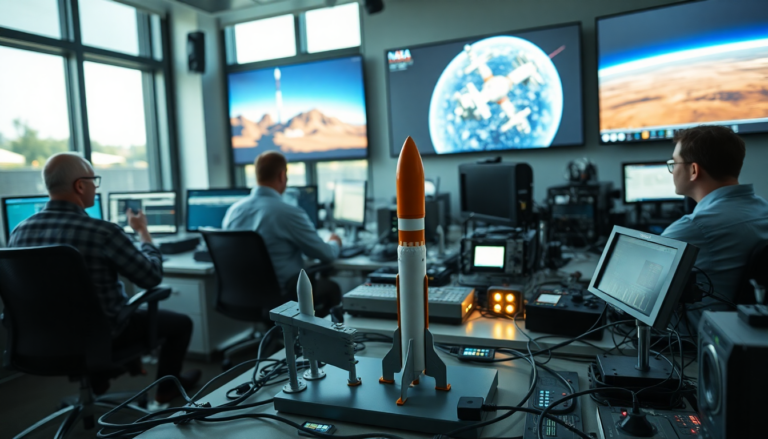Argomenti trattati
NASA plays a pivotal role in fostering innovation within the tech economy, focusing on developing technologies for space exploration that yield substantial advantages for life on our planet. Through strategic investments, NASA aims to enhance the nation’s technological base, ensuring that the advancements made in space can be translated into practical applications here on Earth.
Curiosity Unleashed: The Curious Universe Podcast
Join NASA’s official podcast, Curious Universe, where you can immerse yourself in thrilling scientific discoveries and space adventures. This engaging platform allows you to explore the cosmos alongside esteemed astronauts, scientists, and engineers. Each episode is designed to ignite your curiosity and expand your knowledge about the vast universe we inhabit.
Strategic Technology Investments for the Future
The Space Technology Mission Directorate (STMD) is refining its strategy to prioritize technology investments aimed at building a robust national tech foundation for civil space initiatives. This approach is crucial as NASA embarks on ambitious missions to the Moon, Mars, and beyond, requiring advanced technologies to facilitate quick, safe, and efficient travel.
Innovative Technologies for Space and Earth
The Advanced Composite Solar Sail System
Navigating the cosmos requires innovative solutions. NASA’s Advanced Composite Solar Sail System is one such initiative that promises to revolutionize space travel. By harnessing solar energy, this technology could enhance our understanding of the Sun and the Solar System while paving the way for future explorations.
NASA’s Technology Transfer Program
Through its Technology Transfer Program, NASA ensures that advancements made for space exploration are accessible to the public, maximizing their benefits. These innovations, often termed NASA spinoffs, find diverse applications, addressing challenges we may not have initially anticipated. This program exemplifies how space technologies can translate into commercial products that improve life on Earth.
Essential Technologies for Astronauts
Living and Working in Space
For NASA’s robotic and human explorers, technology is indispensable. It encompasses everything from power generation for mission activities to the habitats or spacecraft they inhabit. Moreover, astronauts require technology to prepare food, exercise, and maintain their overall health and well-being while in space.
Advanced Manufacturing Technologies
To facilitate both terrestrial and in-space missions, NASA is pioneering advanced manufacturing technologies. By developing new materials with enhanced properties and innovating manufacturing processes, NASA is making exploration missions not only more efficient but also more cost-effective.
Robotic Systems and Autonomous Technologies
Exploration Beyond Earth
NASA employs robotic systems to scout other planets and celestial bodies, serving as precursors to crewed missions. These systems assist astronauts aboard the International Space Station and conduct significant research throughout the universe. Autonomous technologies allow these robotic systems, spacecraft, and aircraft to operate independently in dynamic environments, enhancing mission success.
State-of-the-Art Science Instruments
NASA’s science instruments are designed to gather critical data about planetary geology, atmospheres, and environmental conditions. These advanced tools facilitate remote sensing, mapping, and observation capabilities, enabling scientists to analyze light from distant stars and search for signs of life.
The Importance of Space Communication
Reliable communication systems are vital for every NASA mission. With powerful antennas stationed on Earth, NASA transmits commands and receives groundbreaking scientific data daily. Whether it’s relaying information from the Voyager spacecraft or connecting with astronauts on the International Space Station, effective communication ensures seamless collaboration between Earth and space.
Advancing Cooperative Spacecraft Technologies
The Starling Mission
NASA’s Starling mission aims to test various technologies for cooperative groups of spacecraft, known as distributed missions or swarms. This six-month mission will employ four CubeSats in low-Earth orbit to demonstrate how spacecraft can operate in synchronization without relying on ground resources, enhancing data collection and operational efficiency.
NASA’s Commitment to Technological Evolution
NASA continues to push the boundaries of technological innovation, impacting both space and terrestrial applications. By investing in cutting-edge technologies and fostering a culture of curiosity and discovery, NASA is shaping the future of exploration and improving life on Earth.

